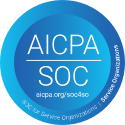Customer experience (CX) is more than just how friendly or helpful your service reps are on support calls, emails, or chats. Especially in the digital marketplace, customer experience is made up of a complex web of factors.

In order to capture the full picture of customer experience, it’s best to track a combination of KPIs that can help you determine not just your overall success with CX, but also where in the customer lifecycle you can make improvements.
Here are 10 valuable CX KPIs, and what they mean for your business.
1. Net Promoter Score (NPS)
Introduced by Frederick F. Reichheld in the 2003 Harvard Business Review article “The One Number You Need to Grow”, NPS is often considered the most important KPI for customer experience.
Customers are surveyed with the following question: “On a scale of 0 to 10, how likely are you to recommend this company’s product or service to a friend?” The results are used to calculate NPS.
NPS measures the willingness of customers to recommend your products or services to others — a very significant measurement, considering most consumers trust recommendations from friends and family above other forms of advertising.
2. Referrals
While NPS measures customers’ willingness to recommend your business, it doesn’t track the number of actual referrals. Referrals are generally tracked as part of a larger acquisition campaign, using special links or codes to determine how many new customers you acquire via referral.
Similar to NPS, referrals are an indicator of customer experience. As long as you make the referral process easy to understand, the more people who enjoy your product or service, the more referrals you’ll get.
3. First Reply Time
When your customers need assistance solving a problem, you might think that the resolution itself is what matters most. However, it’s also important to consider how long customers have to wait for a response — many customers prefer to receive a reply before a solution is even being worked on. Faster first reply times translate to higher customer satisfaction and are a key component of CX.
4. Average Resolution Time
Average resolution time directly correlates with customer satisfaction rates. If you take too long to solve issues, customers may go to your competitors instead, even if they were otherwise satisfied with your product or service. The faster you can get your customers back on track, the better their experience will be.
5. Customer Churn Rate
Customer churn measures the percentage of customers that stop using your business during a particular time frame. Especially during the implementation of a new program, it can give you an idea of how customer experience is being affected.
Dividing the number of customers you lost during a time period by the number of customers you had at the beginning of the same time period will give you your customer churn rate. For example, if you begin the year with 800 customers and end the year with 750 customers, your churn rate is 6.25%.
6. Customer Retention Rate (CRR)
Often considered the inverse of customer churn, CRR measures the percentage of customers you’ve successfully retained at the end of a given time period. The better your customer experience, the more customers you’ll retain.
7. Cross-Sell Rate
Cross-selling is the process of selling a secondary item to a customer in addition to the primary product or service they set out to purchase. Cross-selling has the potential to improve CX, loyalty, and trust when the additional items provide value to the customer.
8. Conversion Rate
While conversion rates are primarily an acquisition measurement, they’re also important for CX; positive experiences drive conversion rates, and in turn boost revenue. If a large percentage of people walk away from your business without making a purchase, that may indicate an issue with customer experience that needs to be remedied.
9. Customer Effort Score (CES)
One of the main components of customer experience is how quickly and easily customers are able to get what they need from your business.
CES is calculated using a survey question along the lines of, “How much effort was required on your part to accomplish what you wanted to with our business?” Customers who have better customer experiences tend to report lower levels of effort required.
10. Customer Satisfaction Score (CSAT)
CSAT is a simple way to measure CX, and relatively easy to track across the customer lifecycle. After a purchase or other interaction, customers are asked how satisfied they were with the experience.
This survey question can be repeated after each interaction, allowing you to pinpoint aspects of customer experience that need improvement. For example, if CSAT scores go down after interactions with customer support, you’ll know that the customer support process needs some adjustment.
Conclusion
To keep customers coming back, you need to make sure that they’re successful — that your product or service helps them achieve what they set out to do. Tracking customer experience KPIs will help you determine what strategic changes you can make to provide that extra value to your customers. While any one metric usually isn’t enough to give you a clear picture of what’s working and what’s not, by combining several you can paint a pretty detailed picture of where you can move the needle.








